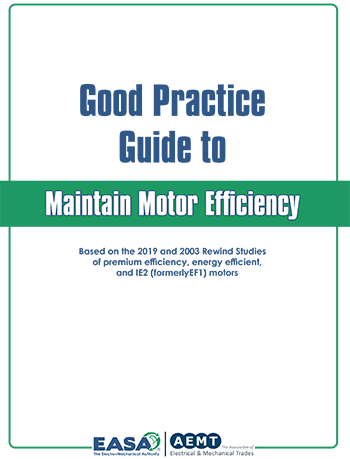 The purpose of this guide is to provide repair/rewind practices and tips that will help service center technicians and motor winders maintain or increase the efficiency, reliability and quality of the motors they repair.
The purpose of this guide is to provide repair/rewind practices and tips that will help service center technicians and motor winders maintain or increase the efficiency, reliability and quality of the motors they repair.
Some of the included procedures derive directly from the 2019 and 2003 rewind studies by EASA and AEMT of the impact of repair/rewinding on motor efficiency. Others are based on the findings of an earlier AEMT study [1998] of small/ medium size three-phase induction motors and well-established industry good practices .
The procedures in this guide cover all three-phase, random-wound induction motors. Much of the guide also applies to form-wound stators of similar sizes.
(Note: This guide provides many specific procedures and recommendations. Alternative practices may accomplish the same results but must be verified.)
Table of Contents Overview
- Terminology
- Energy losses in induction motors
- Motor repair processes
- Preliminary inspection
- Dismantling the motor
- Removing the old winding and cleaning the core
- Rewinding the motor
- Reassembling the motor
- Confirming the integrity of the repair
WARNING: HAZARDOUS AREA MOTORS
Some elements of this Good Practice Guide To Maintain Motor Efficiency, particularly those concerning changes to windings, do not apply to hazardous area/explosion-proof motors (e.g., UL, CSA, IECEx). Do not use this guide for those types of motors. |
AVAILABLE IN SPANISH
BUY A COPY
ANSI/EASA AR100
More information on this topic can be found in ANSI/EASA AR100
Print
